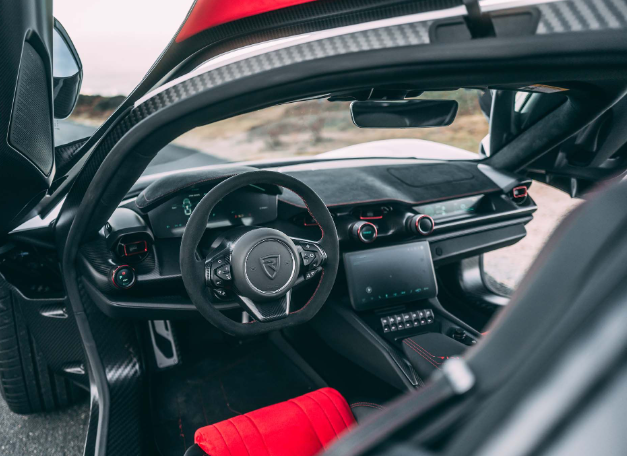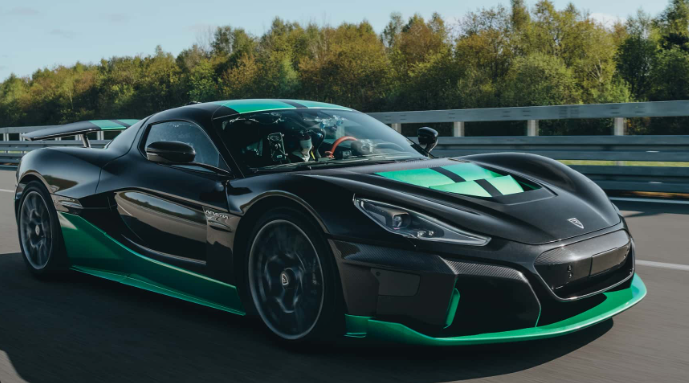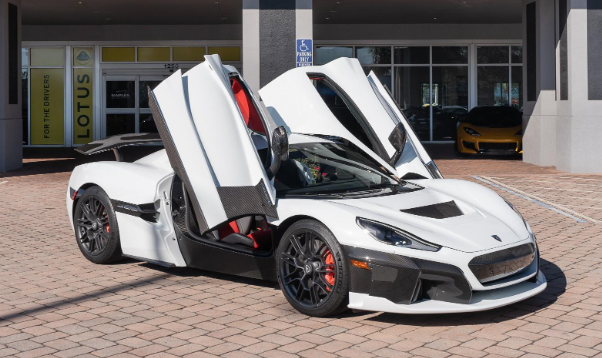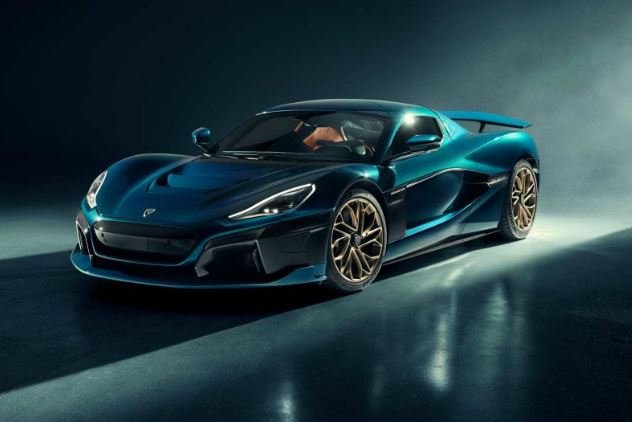California’s Malibu – The $2.1 million Rimac Nevera ease of use makes it the most astonishing feature about the vehicle.
An electric hypercar from Croatia is called the Rimac Nevera. It looks at first glance as though the straightforward act of getting into it could be difficult because of how low it sits to the ground. However, the doors, which lift up and out somewhat akin to a Lamborghini’s, cut just enough into the roof to prevent me from bumping my head as I get into the driver’s seat.

It does require some learning to get started. The power seat adjustments are concealed in a touchscreen, the gearshift is controlled by a large knob to the left of the steering wheel, and the headlight and turn signal controls are positioned directly on the steering wheel. But once you’ve mastered that, using it is straightforward.
Despite having 1,914 horsepower, the entire vehicle is straightforward to use.I was immediately struck by how clear the Nevera’s windows are as soon as we start moving. With vehicles of this kind, that is not a given. It can be difficult to see what is behind you, for instance, in Ferraris, Lamborghinis, and other low-slung highway rockets. However, even though the Rimac Nevera is unmistakably low-slung, there is just enough rear visibility to make driving in highway traffic convenient. That is definitely helped by good side mirrors.

Also Read: Byjus is perched on the brink of doom: Can the edtech behemoth regain its former glory?
The Rimac Nevera story
Rimac, which is roughly pronounced REE-mahtz, is Croatia’s sole manufacturer of automobiles. Mate (MAH-ta) Rimac, the company’s 35-year-old founder, began experimenting with electric vehicles after blowing the engine in an old BMW he raced as a youngster. He formed Rimac Nevera Automobili in 2009 with the intention of eventually producing an electric supercar in his native country after rebuilding it with an electric drivetrain and taking home several victories in the process.

Although the early years of Rimac the firm were difficult, Mate’s timing ultimately turned out to be ideal as automakers all over the world moved to electrify their fleets.
Hyundai and Porsche all made large investments in Rimac after seeing its early prototypes, and the company raised an additional 500 million euros (or $534 million) last year. These laid the groundwork for what is now a booming consultancy company serving traditional automakers desirous of producing high-performance EVs. Among Rimac’s customers are Aston Martin and Swedish supercar manufacturer Koenigsegg, as well as a handful of others that the business claims it can’t yet name.
The nevera is named after the violent summer storms that originate in the Adriatic Sea and sweep over Croatia. (Rimac staff members enjoy claiming that neveras, or storms, are “extremely powerful and charged by lightning,” just like their vehicle.)The Nevera (the vehicle) fulfills Mate Rimac’s lifelong desire of creating the supercar while also serving as a mobile demonstration of Rimac Neveracompetence in electric vehicles. With a 120 kilowatt-hour battery pack and four motors—one for each wheel—it has a range of around 300 miles when driven normally.

Four motors and a cravat
from the Nevera’s power output is everything from typical. It has a total output of 1,914 horsepower and 2,360 newton meters of torque from its four motors, which enables it to reach a top speed of 258 miles per hour. According to Rimac, it only takes 1.74 seconds to go from 0 to 60 miles per hour.
Although I couldn’t verify that time very precisely, I can confirm that such a power thrust is conceivable. When fully uncorked, the Rimac Neverais almost astonishingly quick, making it a pleasant experience to drive in traffic. However, it never feels out of control, which is a noteworthy engineering accomplishment.
The interplay of those four motors is perhaps more astounding, albeit not as overt. For optimal handling at all times, the car’s systems modify each motor’s power output 100 times per second. Or, to put it another way, the Nevera effortlessly maneuvers in and around confined spaces. Other supercars can only simulate that technique by applying the brakes.
Given that the car weighs about 5,100 pounds, it is an even more spectacular stunt. Even though it may be difficult to imagine, the batteries are situated low and near to the Rimac Nevera center, which effectively distributes the weight such that it is barely apparent. (Of course, having so much power available is beneficial.)
image source: google




































